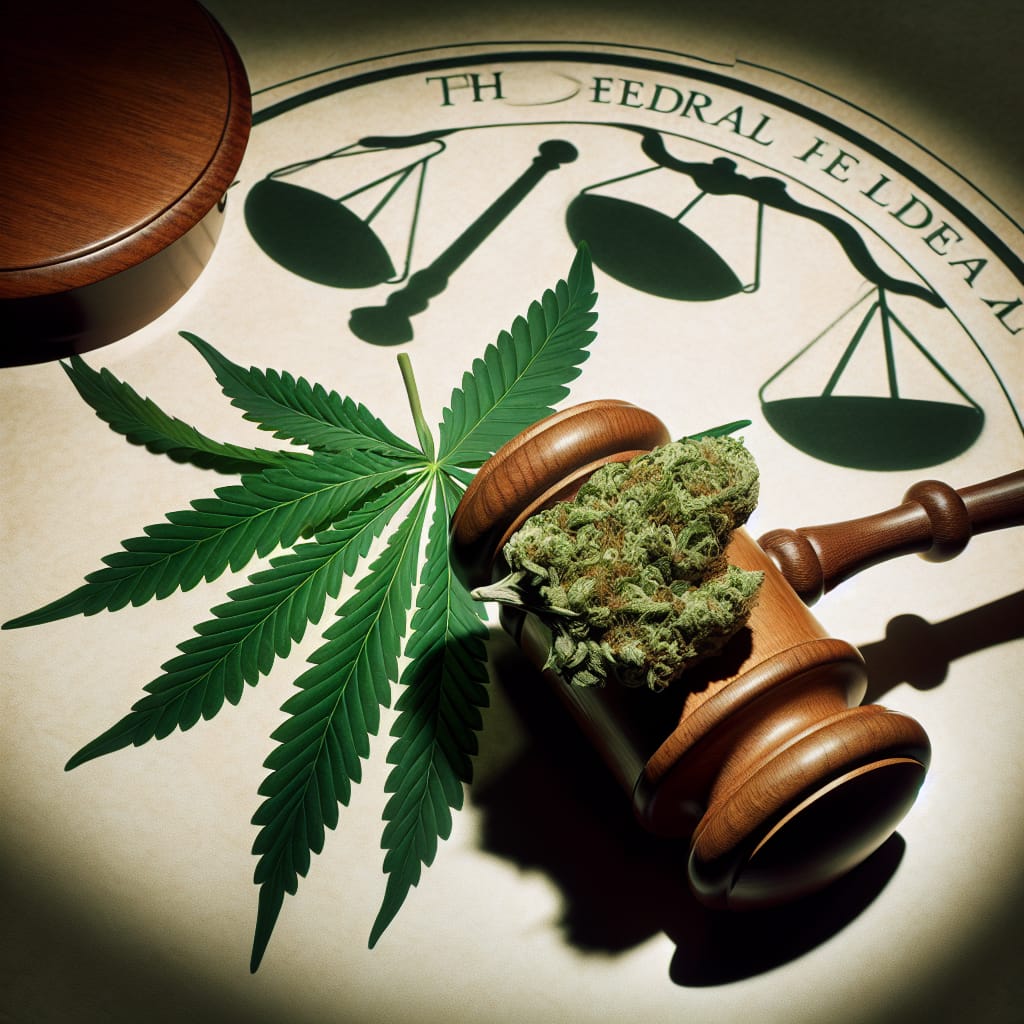Imagine a world where both the federal and state governments embraced the full potential of the booming cannabis industry. Seems like a dream, right? Well, as we all know, reality is often a bit more complicated. In the United States, the federal laws surrounding cannabis have created a rather sticky situation for those involved in the industry. With a patchwork of regulations, conflicting views, and legal hurdles, it’s no wonder that navigating the intricate web of federal laws affecting the cannabis industry is no easy task. Despite the growing acceptance and legalization efforts on the state level, the federal landscape remains a murky and constantly evolving challenge for those in the cannabis business. So, let’s take a closer look at the intricacies of these federal laws and what they mean for the future of cannabis. Federal laws play a significant role in shaping the cannabis industry in the United States. From the Controlled Substances Act to the Hemp Farming Act, these regulations have a direct impact on how the industry operates, its legality, and potential future developments. This article will provide an overview of the key federal laws affecting the cannabis industry, outlining their purpose, implications, and potential for reform.
Controlled Substances Act
The Controlled Substances Act (CSA), passed in 1970, is a federal law that classifies drugs into different schedules according to their potential for abuse and medical value. Cannabis is currently classified as a Schedule I substance, which means it is considered among the most dangerous drugs with no recognized medical use. This classification has had a profound effect on the cannabis industry, as it establishes federal prohibition and imposes severe penalties for cultivation, distribution, and possession. Despite efforts to challenge the scheduling of cannabis, it remains a significant obstacle for industry growth.
Marijuana Tax Act of 1937
The Marijuana Tax Act of 1937 was the first federal law to regulate cannabis on a national level. It imposed a tax and registration requirement for those involved in the cannabis industry, effectively criminalizing its production and use. The act had a profound impact on the cannabis industry, leading to its decline and the emergence of a black market. Ultimately, the Marijuana Tax Act was repealed in 1969, but its legacy still influences the current regulatory landscape surrounding cannabis.
Comprehensive Drug Abuse Prevention and Control Act of 1970
The Comprehensive Drug Abuse Prevention and Control Act of 1970 is a comprehensive law that addresses drug abuse and federal drug policy. This act established the Drug Enforcement Administration (DEA) and expanded the federal control over the regulation, distribution, and possession of drugs. Under this act, cannabis was classified as a Schedule I substance, leading to strict enforcement and penalties. However, attitudes towards cannabis have evolved since then, raising questions about the potential for reforms and rescheduling.
Controlled Substances Import and Export Act
The Controlled Substances Import and Export Act is a federal law that regulates the importation and exportation of controlled substances, including cannabis. This act aims to prevent the illicit trade of drugs across international borders and control the flow of controlled substances. It has had a significant impact on the cannabis industry, as illegal importation and smuggling of cannabis remain prevalent challenges. Law enforcement agencies have made efforts to enforce this act and crack down on illicit trade.
Authorization of Medical Marijuana
The authorization of medical marijuana is a complex issue, as states have passed laws allowing the use of cannabis for medical purposes, while federal law still classifies it as a Schedule I substance. This conflict has created a legal gray area, with states implementing their own regulations to allow patients access to medical marijuana. The Department of Justice (DOJ) has issued guidelines, such as the Cole Memo, which provided some guidance for federal law enforcement priorities regarding medical marijuana. Additionally, the Rohrabacher-Farr Amendment, passed annually since 2014, prohibits the DOJ from using federal funds to interfere with state medical marijuana programs. The current status and future outlook of medical marijuana continue to be subjects of debate and potential reform.
Food, Drug, and Cosmetic Act
The Food, Drug, and Cosmetic Act is a federal law that gives the Food and Drug Administration (FDA) authority over the approval, labeling, and marketing of drugs, including cannabis-derived products. The FDA plays a crucial role in regulating pharmaceutical products and ensuring they meet safety and efficacy standards. Regarding cannabis, the FDA has approved a drug containing CBD, a non-psychoactive compound found in cannabis, for the treatment of specific conditions. Nonetheless, the FDA has raised concerns about unapproved drug claims and the need for further research on the effects of cannabis-derived products.
Banking Restrictions
Federal banking laws and regulations present significant challenges to the cannabis industry. Due to the federal prohibition of cannabis, many financial institutions are reluctant to provide banking services to cannabis-related businesses. This has led to a predominantly cash-based industry, creating security risks and obstacles for businesses to operate smoothly. Several attempts have been made to address this issue, including the introduction of the SAFE Banking Act, which aims to provide legal protection and access to financial services for cannabis-related businesses. However, the industry continues to face banking restrictions that hinder its growth and development.
Hemp Farming Act
The Hemp Farming Act, as part of the 2018 Farm Bill, legalized the cultivation of industrial hemp in the United States. Hemp is a variety of cannabis that contains extremely low levels of THC, the psychoactive compound responsible for the “high” associated with marijuana. This act has opened up opportunities for farmers to cultivate hemp for various purposes, including the production of fibers, textiles, and CBD products. The distinction between industrial hemp and cannabis remains crucial, as it determines the legality and regulation of these respective industries.
State Laws vs Federal Laws
One of the most significant challenges facing the cannabis industry is the conflict between state laws and federal laws. While an increasing number of states have legalized cannabis for medical and/or recreational use, federal law still categorizes it as a Schedule I substance. This discrepancy creates legal uncertainties and conflicts, impacting various aspects of the industry, such as banking, taxation, and inter-state commerce. In some cases, federal preemption may nullify state laws, leading to legal challenges and limitations on state legalization efforts. Understanding the implications of state laws versus federal laws is crucial for navigating the complex legal landscape of the cannabis industry.
In conclusion, federal laws have a profound impact on the cannabis industry in the United States. From the Controlled Substances Act to the Hemp Farming Act, these regulations shape the legality, enforcement, and future potential of the industry. Understanding the purpose, implications, and potential reforms of these laws is essential for stakeholders in the cannabis industry and those interested in its development. As attitudes and perspectives continue to evolve, the cannabis industry will face ongoing challenges and opportunities on a federal level.




